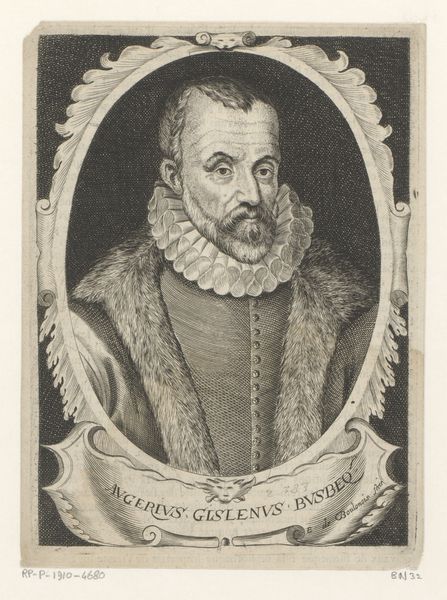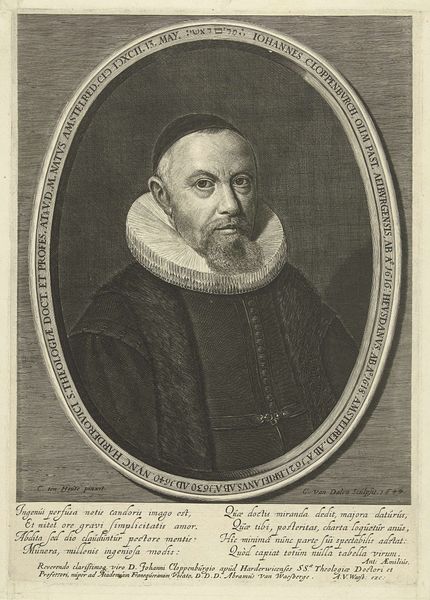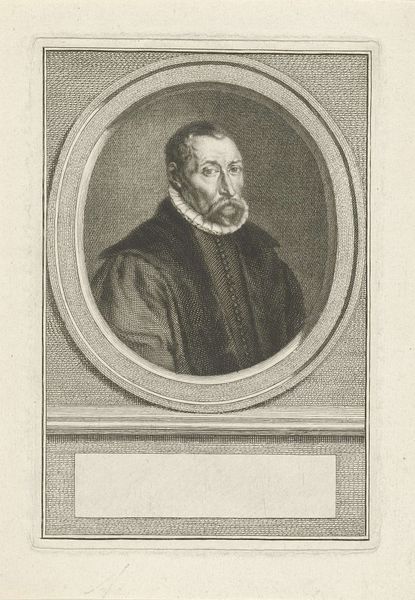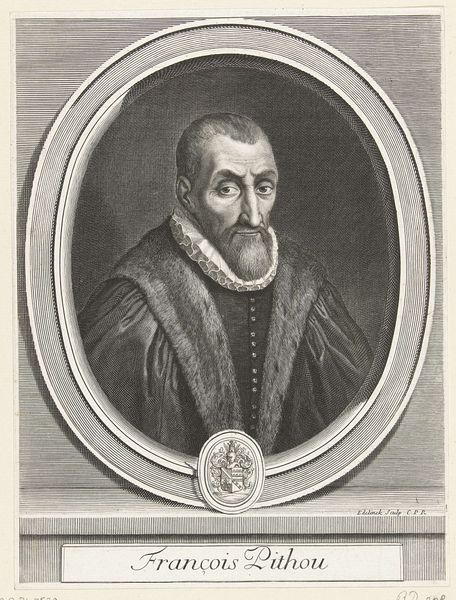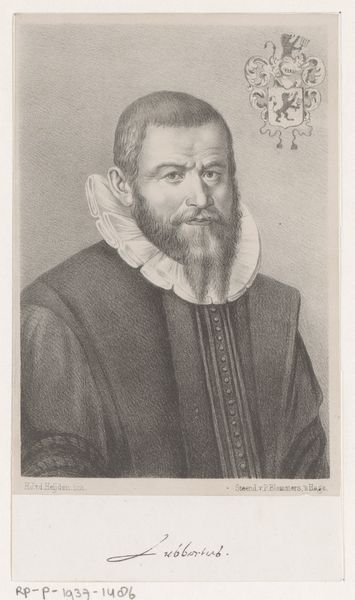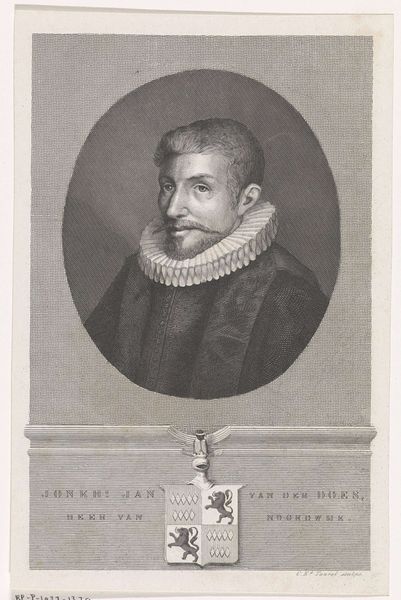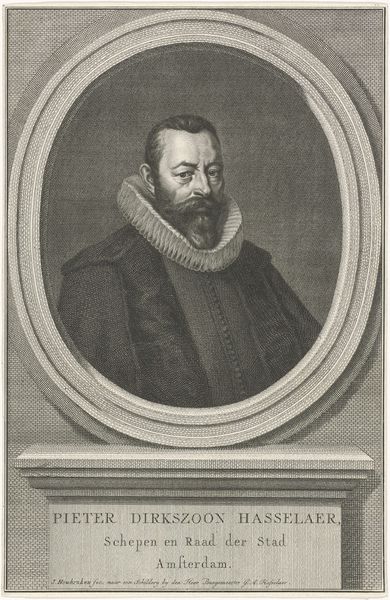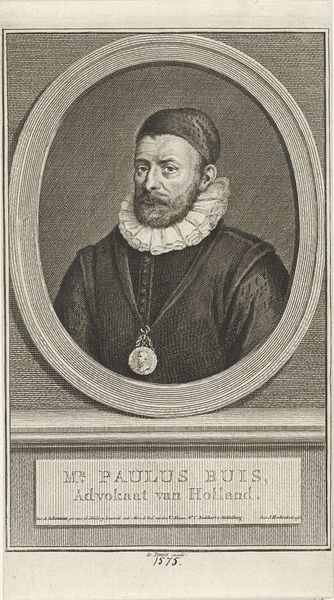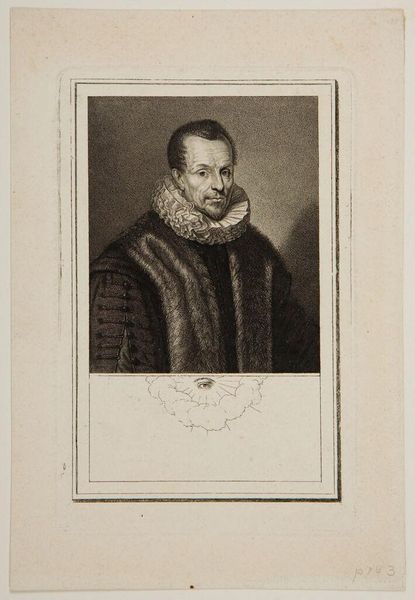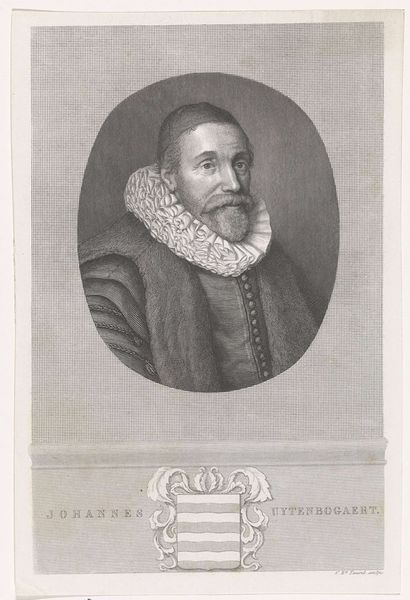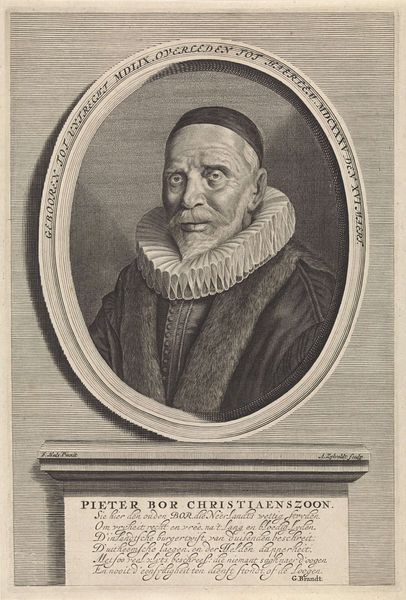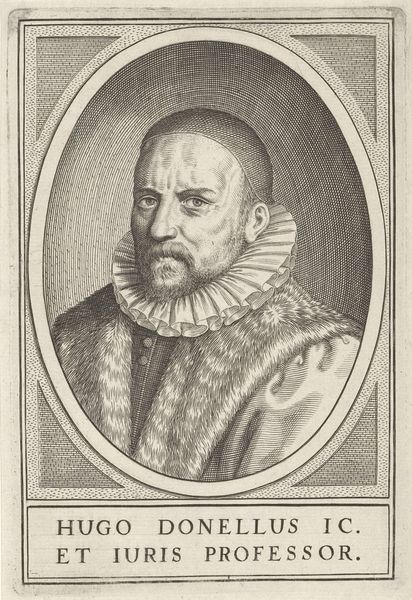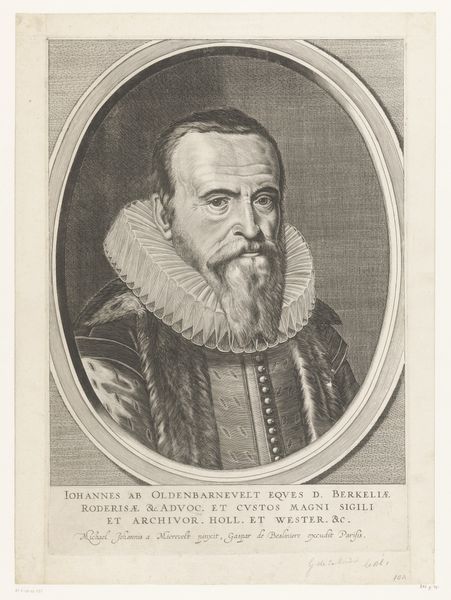
drawing, print, etching, engraving
#
portrait
#
drawing
#
baroque
# print
#
etching
#
charcoal drawing
#
historical photography
#
engraving
Dimensions: height 277 mm, width 187 mm
Copyright: Rijks Museum: Open Domain
Curator: Look at this striking portrait. It's titled "Portret van Bartholomäus Keckermann," and dates back to sometime between 1664 and 1721. It’s currently held here at the Rijksmuseum. The piece is an engraving, likely made after an original drawing, offering a fascinating glimpse into a significant figure of that era. Editor: He has an intense gaze, doesn’t he? Very self-assured. The ruffled collar nearly frames his face like a halo. There's something almost severe about the composition—stark, almost austere. Curator: Indeed. Bartholomäus Keckermann was a professor of Hebrew, philosophy, and theology. This portrait offers an insight into the intellectual circles of the time. Considering his profession and the historical period, the severity may speak to a kind of scholarly rigor and the weight of theological discourse. Editor: You see the religious and academic gravitas; I see the enduring symbol of the learned man. The beard, the high collar—these are archetypes of knowledge and authority that transcend time. The engraver has masterfully captured these elements, lending Keckermann an almost iconic quality. Curator: What's particularly compelling to me is how the piece negotiates identity. While presenting Keckermann as an intellectual authority figure, the portrait also highlights the rigid societal structures and expectations placed on such men. His agency is expressed through his intellect, which becomes the focal point and defining attribute within a larger, possibly oppressive framework. Editor: It really does become an emblem, doesn’t it? I mean, this man becomes an allegory of learning through the symbolic language of the piece. Consider the oval frame. It almost isolates him, presenting a window onto this particular type, this intellectual "ideal." Curator: Absolutely. This is precisely the kind of visual shorthand that resonates so profoundly. I find myself considering what a contemporary reading of such images might reveal about our own expectations of authority and intellectualism. Editor: A worthwhile question. I came in expecting just another historical portrait, but now I'm leaving with something else entirely – a reminder of how art endures by evolving into visual emblems of a period and its values. Curator: And for me, the lasting impact lies in recognizing the ways visual representations shape not just perception, but lived experience and political possibility.
Comments
No comments
Be the first to comment and join the conversation on the ultimate creative platform.
